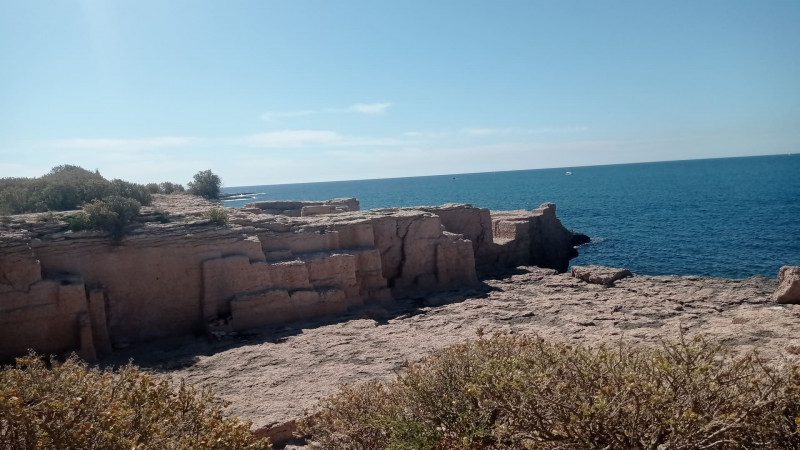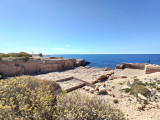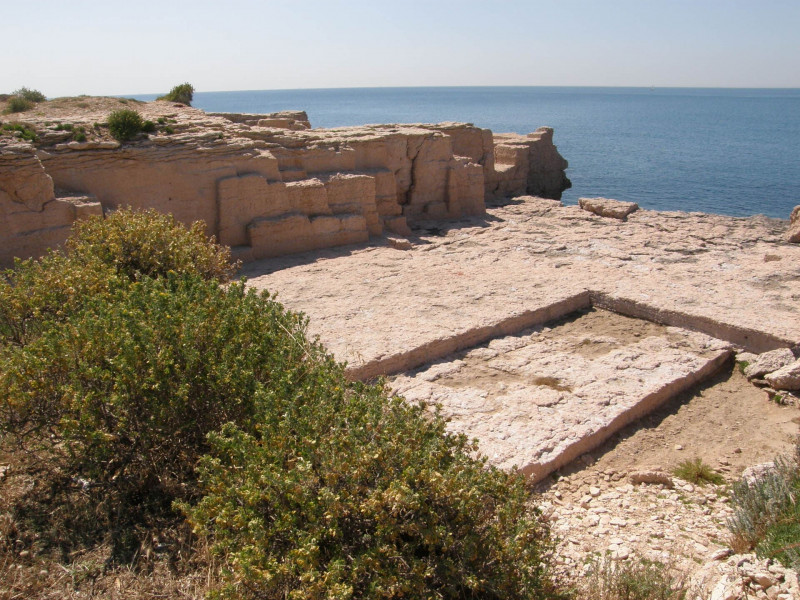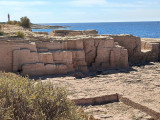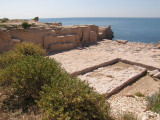Les carrières de Baou Tailla
Historic site and monumentPresentation
Located at the extreme south-west of La Nerthe peninsula, the shelly limestone quarries (tender pink rock) in La Couronne are well known for having provided stone for Marseille constructions at different times.
Baou Tailla means hewn cliff.
The activity of quarrymen marked the landscape around the village of La Couronne and Carro, the small port from where materials were sent to Marseille for constructions like the Vieille Charité and the town hall.
From Antiquity to the middle of the 19th century, passing through Roman and medieval times, the Martegal coast gave birth to dynasties of quarrymen. The rock there is softer than its neighbors of Cassis or Niolon. From the 4th century BC. J-C, the Greeks exploited this limestone, (shelly limestone substrate of the Miocene which is between 25 and 16 million years old), in order to build the first ramparts of Marseille.
The master stone tracers formed a brotherhood called "Brotherhood of Our Lady of the Nativity", under the leadership of the village priest. Statutory rules defined the rights and duties of each, creating solidarity between the different teams of tailors. An account book was kept, listing the members of the Brotherhood, from 1788 to 1884. It reveals that their number was stable: between 75 and 85.
The hard work involved in working with stone requires very precise techniques, which have evolved little since Antiquity. Using a "squad" (a tool that serves as both a pickaxe, an ax, and a hammer and weighs about 5kg), the quarryman begins by clearing the site he is going to carve. Then, it slices vertically around the piece to be extracted, standing on the block for more precision. It is a job that can take between 2 and 5 days depending on the hardness of the stone.
The next step is to dig the corners: this is a delicate step because a wrong maneuver can crack the block. To detach it from the rock, iron plates are wedged on the sides, then the block is lifted using pliers. The last stage is the aquérissage (summary equalization of the blocks), consisting in removing the irregularities and preparing them for transport. Each team engraves a sign in the stone they cut to recognize it. We can also observe these signs on some walls of the church of La Couronne. The blocks were then embarked on boats, moored to mounds carved into the rocks.
The activity of quarrymen marked the landscape around the village of La Couronne and Carro, the small port from where materials were sent to Marseille for constructions like the Vieille Charité and the town hall.
From Antiquity to the middle of the 19th century, passing through Roman and medieval times, the Martegal coast gave birth to dynasties of quarrymen. The rock there is softer than its neighbors of Cassis or Niolon. From the 4th century BC. J-C, the Greeks exploited this limestone, (shelly limestone substrate of the Miocene which is between 25 and 16 million years old), in order to build the first ramparts of Marseille.
The master stone tracers formed a brotherhood called "Brotherhood of Our Lady of the Nativity", under the leadership of the village priest. Statutory rules defined the rights and duties of each, creating solidarity between the different teams of tailors. An account book was kept, listing the members of the Brotherhood, from 1788 to 1884. It reveals that their number was stable: between 75 and 85.
The hard work involved in working with stone requires very precise techniques, which have evolved little since Antiquity. Using a "squad" (a tool that serves as both a pickaxe, an ax, and a hammer and weighs about 5kg), the quarryman begins by clearing the site he is going to carve. Then, it slices vertically around the piece to be extracted, standing on the block for more precision. It is a job that can take between 2 and 5 days depending on the hardness of the stone.
The next step is to dig the corners: this is a delicate step because a wrong maneuver can crack the block. To detach it from the rock, iron plates are wedged on the sides, then the block is lifted using pliers. The last stage is the aquérissage (summary equalization of the blocks), consisting in removing the irregularities and preparing them for transport. Each team engraves a sign in the stone they cut to recognize it. We can also observe these signs on some walls of the church of La Couronne. The blocks were then embarked on boats, moored to mounds carved into the rocks.
Labels
- categories :
General information
- Parking :
- Parking nearby
- Services :
- Pets welcome
- Style :
- Ancient
Services, Tours, Activities and entertainment
- Historical patrimony :
- Historic patrimony
- Ruins and remains
- Archeological site
- Motor-home :
- Camper van reception area
Contact
Les carrières de Baou Tailla
17 à 21 Corniche De Baou Tailla
13500
Martigues
Phone : +33 4 42 49 03 30
Tarifs
Free access.

Destination
Les carrières de Baou Tailla
17 à 21 Corniche De Baou Tailla
13500
Martigues
GPS coordinates
Latitude : 43.329036
Longitude : 5.044718




